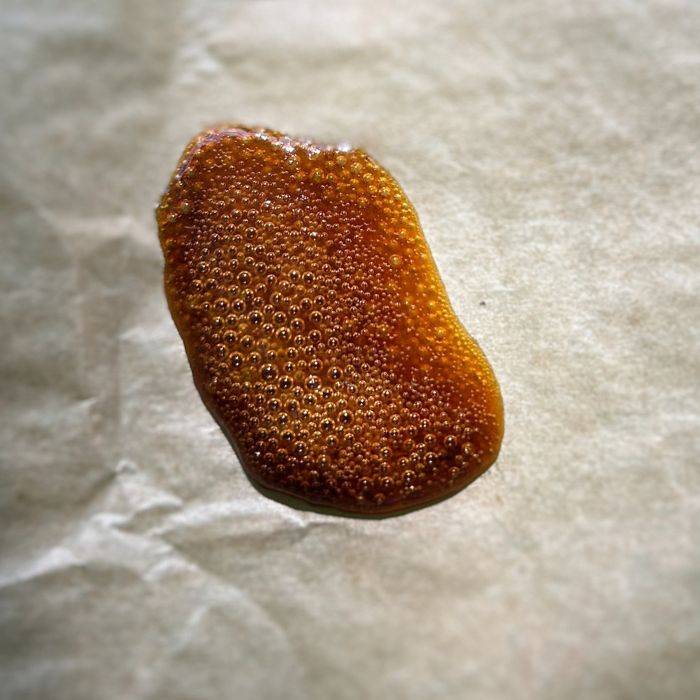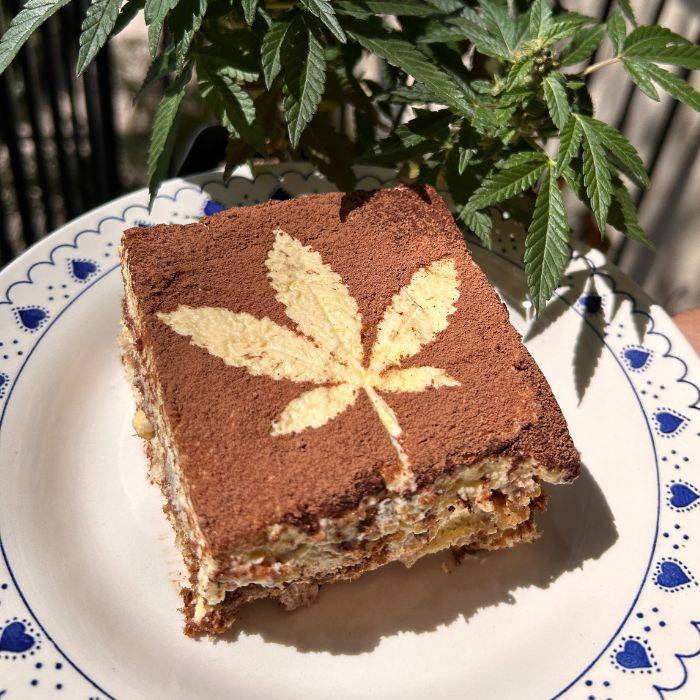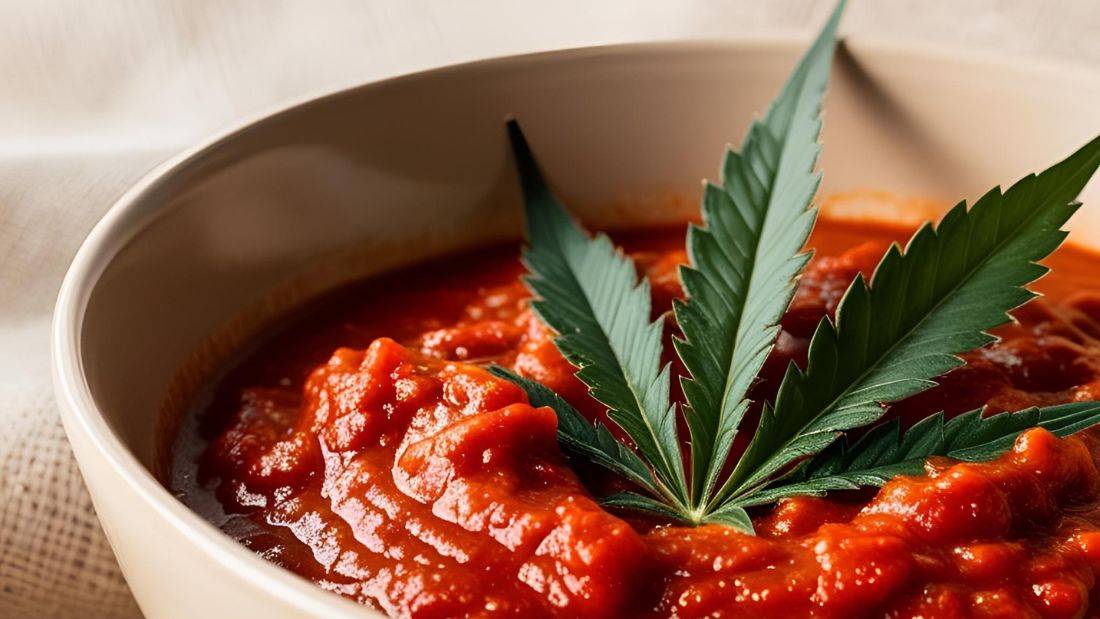Concentrates like rosin, kief, and hash are highly potent cannabis products and one of my personal favorite forms of cannabis to work with. Decarboxylating, aka decarbing, cannabis concentrates is very simple and require fewer steps compared to decarbing flower. While these steps are similar to my Decarboxylating Flower Guide, there are key differences with time and temperature that you’ll need to track. That being said, not all concentrates are created equal and its important to distinguish the different types of weed concentrates that are available in the market.
What is Cannabis Concentrate? (Types & Uses Explained)
Cannabis concentrates can typically be divided into two categories:
- Solvent-Based Concentrates (diamonds, crumble, shatter, and distillate) are extracted using solvents such as butane or ethanol. These concentrates are usually more affordable, but the extraction process can sometimes leave behind residual solvents, so always buy from a trusted source. Because of this, I don’t typically recommend using solvent-based concentrates in homemade edibles.
- Solventless Concentrates (like rosin, kief, and hash) are extracted using natural solvents like water and ice. While the term “solventless” implies no solvents, technically, water and ice act as solvents to separate the trichomes from the plant material. This makes a much cleaner product that will not leave any chemical byproduct in your final product.
Disclaimer: If using solvent-based concentrates, decarboxylate using proper ventilation and avoid open flames. Solvent-based concentrates (BHO, crumble, diamonds, distillate) come with additional safety concerns due to the residual solvents that can be left in the final product. Unlike solventless concentrates, these extracts are extracted using a chemical solvent (e.g butane, propane, and supercritical CO2), which can be flammable and release harmful fumes when heated. When it comes to decarbing cannabis concentrates, I almost always go for solventless options (rosin and kief) as they create a clean and potent homemade infusions.

Decarbing Cannabis Concentrate (Step-by-Step)
I used this method of decarbing cannabis concentrate (with great success) when I was living with roommates who did not like the dank weed smell, just make sure the aluminum lid/cover is securely on the dish that you will be decarbing the concentrate in. Covering the dish with foil or parchment paper helps retain heat and reduces terpene loss during decarbing.
Guide to Decarbing Concentrate (e.g., Wax, Rosin, Hash)
Supplies
- cannabis concentrate
- oven-safe glass dish + aluminum foil acting as a lid
- parchment paper (or aluminum foil)
- thermometer
Instructions
- Preheat your oven to 240°F. Cut a piece of parchment paper that is at least 3x the size of your cannabis concentrate and place into the glass dish. The concentrate will spread out a bit during the decarbing process, so make sure to cut a piece that is slightly bigger to account for the spread.
- Place your cannabis concentrate in the center of the parchment paper and cover the top with aluminum foil, this will keep the smell contained and prevents it from escaping.
- Place the foil-covered dish on the middle rack of your preheated oven.
- Bake at 240°F for 30 minutes, or until the bubbles have slowed down significantly. Carefully takeout the dish from the oven and allow it to cool completely before removing the lid. The slow down of the bubbling signals the end of the decarbing process.
- Store or use immediately: the cannabis concentrate is now activated and ready to use! You can incorporate it directly into any oil and create homemade cannabis infused hash oils, or store it in an airtight container for later use!
Tips & Tricks
Do Not Decarb if Using Distillate or RSO: These thc concentrates have already been decarboxylated during there extraction process.
Calculate Potency: Take note of the total starting THC/CBD percentage of the cannabis flower or concentrate, (flower typically ranges from 10-35% THC, while concentrates range from 70-90% THC) and estimate the potency of the cannabutter using an online THC/CBD calculators.
Monitor Temperature Closely: Use a thermometer to avoid overheating, which can degrade cannabinoids and terpenes. Do not surpass 235F.
Look for Bubbles: When decarbing cannabis concentrate (aka extracts), you’ll notice small bubbles forming during the process. These bubbles are CO2 being released and is a good sign that the THC/CBD is becoming activated.
Stir Frequently: Concentrates can settle unevenly and frequent mixing ensures consistent potency throughout the oil.
Storing Decarboxylated Concentrate: If you’re storing the concentrate for later usage, keep it in a cool, dark place to preserve potency and freshness.
FAQ
Decarbing cannabis concentrate at home is fairly simple and below I’ve answered some common questions on this process!
What types of oil can i infuse with the decarboxylated cannabis concentrate?
Cannabis infused oil can be made with just about any oil, but I personally like to infuse olive oil and butter/ghee with cannabis concentrate. Below are some other oils that would infuse well with weed.
MCT oil: Neutral flavor, perfect for edibles or capsules.
Coconut oil: Adds mild sweetness, great for baking or skincare.
Ghee: Adds buttery richness and is shelf-stable.
Olive oil: For savory recipes or wellness tinctures.
Avocado Oil: Mild and neutral flavor, very versatile.
Lard: Adds richness and stores well.
How Do I Know When My Cannabis Concentrate is Properly Decarbed?
A good indication of when the cannabis concentrate is fully decarboxylated, is when the bubbling slows down or stops completely. The concentrate should look slightly darker and more viscous after decarbing
Do I have to decarboxylate cannabis concentrate before infusing with oil?
For the most part, yes decarbing cannabis concentrate before enjoying it fully, although certain concentrates (e.g., distillate and RSO) do not need to be decarbed as they have already been decarboxylated during their extraction process.
Conclusion
Decarbing cannabis concentrate (rosin, kief, or hash) is a simple process that makes a huge difference in the potency and effectiveness of your infusions. I personally love working with decarbed cannabis concentrates as they are easier to work with and more potent (compared to flower). Decarbing cannabis concentrate (e.g, rosin, shatter, bubble hash) allows you to create easy homemade edibles, such as weed infused chocolate dipped strawberries. The world of cannabis becomes your oyster once you successfully decarb concentrate, and I hope you have a fun time exploring!
If you’re looking for a simple and reliable method, using an oven is ideal. This method works best for large quantities of concentrate and if you are planning on making your homemade edibles or tinctures later.




